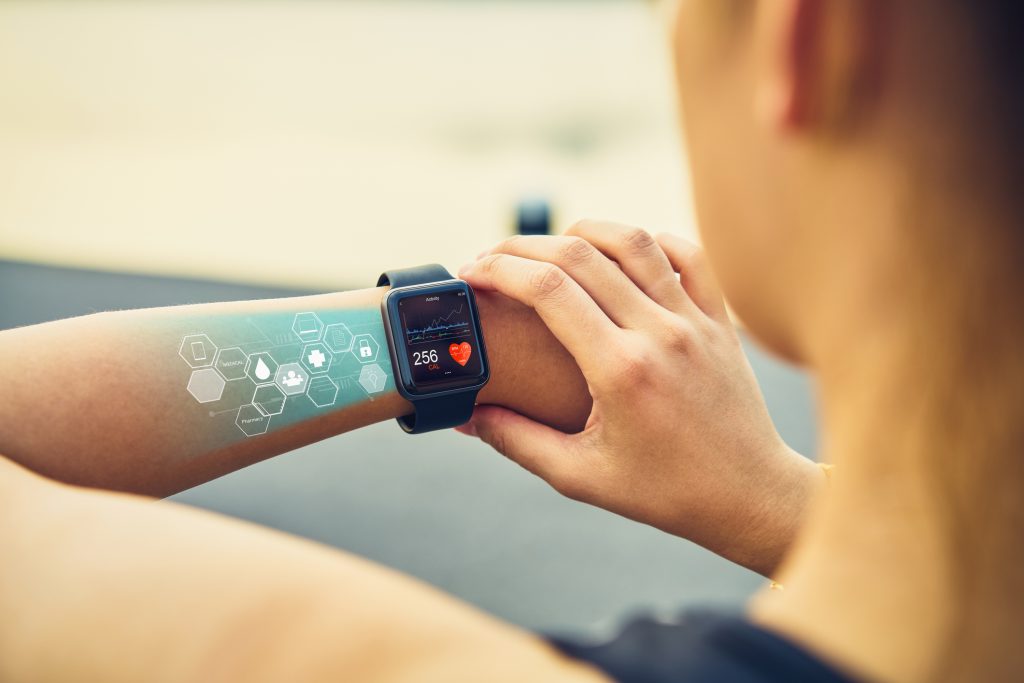
Imagine waking up to a gentle vibration on your wrist, your smartwatch nudging you to start the day with a quick stretch, tailored to your sleep data from the night before. As you sip your coffee, a sleek smart ring tracks your heart rate variability, warning you to take it easy after a stressful week. By 2025, these moments aren’t just futuristic fantasies—they’re part of daily life for millions. Wearable technology is no longer a niche gadget for fitness buffs or tech geeks; it’s a booming industry reshaping how we monitor health, connect with others, and even pay for our morning latte. But where is this market headed? Let’s dive into the trends, innovations, and challenges defining the future of wearable tech, with a sprinkle of personal insight and a deep look at what’s to come.
A Booming Market with Explosive Growth
The wearable technology market is on a rocket-like trajectory. In 2024, the global market was valued at around $157.3 billion, and projections for 2025 estimate it will hit $208.78 billion, with some forecasts predicting a staggering $1.69 trillion by 2032, growing at a compound annual growth rate (CAGR) of 34.9%. What’s fueling this growth? It’s a mix of rising health consciousness, advancements in sensor technology, and the seamless integration of wearables into our connected world. From smartwatches dominating with a 42% share to emerging categories like smart glasses and rings, the market is diversifying at breakneck speed.
I remember my first fitness tracker—a clunky device that barely synced with my phone. Fast forward to today, and my Apple Watch not only tracks my steps but also monitors my heart rate, sleep quality, and even reminds me to breathe during a hectic workday. This personal evolution mirrors the market’s shift from basic pedometers to sophisticated devices that blend health, connectivity, and style.
Key Market Drivers
- Health Awareness Surge: Post-COVID, people are more invested in their well-being. Wearables like Fitbit and Garmin devices now track everything from blood oxygen levels to stress, empowering users to take charge of their health.
- Technological Advancements: Microelectromechanical systems (MEMS) sensors and AI integration have made wearables smarter, smaller, and more accurate.
- IoT and 5G Integration: The rollout of 5G and the Internet of Things (IoT) ensures wearables connect seamlessly, offering real-time data and enhanced user experiences.
- Fashion Meets Function: Brands like Samsung and Huawei are designing wearables that double as stylish accessories, appealing to a broader audience.
Emerging Trends Shaping the Future
The wearable tech landscape is evolving faster than a sci-fi movie plot. Here are the trends that will define the market in 2025 and beyond, each with transformative potential.
1. Advanced Health Monitoring: Beyond Steps and Heartbeats
Health monitoring is the beating heart of wearable tech. In 2025, expect devices to go beyond basic metrics like steps or heart rate. Continuous glucose monitors (CGMs) and wearables like the Oura Ring are already tracking blood sugar and sleep patterns with precision. Soon, we’ll see wearables capable of non-invasive blood pressure monitoring and early detection of conditions like atrial fibrillation. Picture this: your smartwatch alerting you to a potential health issue before you even feel symptoms. It’s not just convenient—it’s life-saving.
I recently spoke with a friend who manages Type 2 diabetes. She described how her Garmin smartwatch paired with a CGM has transformed her daily routine, offering real-time glucose data that helps her make informed diet choices. This is just the beginning. By 2030, healthcare wearables are expected to dominate, with the sector merging medical, fitness, and wellness applications.
2. AI and Machine Learning: The Brains Behind the Bands
Artificial intelligence (AI) is turning wearables into personal health coaches. Samsung’s Galaxy AI is a prime example, integrating AI to provide personalized health insights and predictive alerts. Imagine a device that not only tracks your sleep but suggests a bedtime routine based on your stress levels and tomorrow’s schedule. Machine learning algorithms will analyze vast datasets to offer tailored recommendations, making wearables indispensable.
Last month, I tested a new feature on my smartwatch that used AI to analyze my workout patterns and suggest recovery days. It felt like having a trainer in my pocket—or rather, on my wrist. As AI evolves, expect wearables to become proactive, predicting health risks and enhancing user interaction through voice and gesture recognition.
3. Smart Glasses and AR/VR: A New Reality
Smart glasses and augmented reality (AR) wearables are no longer just for gamers. By 2025, devices like Apple’s Vision Pro and Google Glass will transform industries from healthcare to education. AR glasses can overlay digital information onto the real world, aiding surgeons during operations or helping warehouse workers navigate inventory. The AR/VR segment is predicted to grow at the highest CAGR, driven by advancements in display technology and immersive experiences.
I tried a pair of AR glasses at a tech expo last year, and navigating a virtual map projected onto the lenses felt like stepping into a futuristic movie. These devices are set to redefine productivity and entertainment, with applications in training, gaming, and even remote collaboration.
4. Sustainable and Fashion-Forward Designs
Wearables are shedding their geeky image. Brands are prioritizing sleek, customizable designs that blend with personal style. Think smart jewelry or eco-friendly smartwatches made from sustainable materials. In Europe, where consumers demand zero-impact electronics, sustainable wearables are gaining traction, supported by favorable regulations.
I once hesitated to wear my fitness tracker to a formal event—it screamed “gadget.” Now, with options like stylish smart rings or customizable watch bands, I can track my health without sacrificing aesthetics. This trend is crucial as wearables aim to appeal to fashion-conscious consumers.
5. Workplace Integration: Productivity and Safety
Wearables are infiltrating workplaces, from smart helmets in construction to fitness trackers in corporate wellness programs. In the U.S., 33% of employers integrate wearables to boost employee health and productivity. Imagine a smartwatch alerting a factory worker to hazardous conditions or an AR headset guiding a technician through complex repairs. These applications are driving enterprise adoption, with 46% of companies using wearables for safety and workflow automation.
Challenges and Roadblocks
Despite its promise, the wearable tech market faces hurdles that could slow its sprint.
- Data Privacy Concerns: Wearables collect sensitive data like heart rates and GPS locations, making them prime targets for cyberattacks. Robust encryption and compliance with regulations like GDPR are critical.
- Short Device Lifespan: Rapid innovation leads to frequent upgrades, contributing to e-waste. The industry must prioritize sustainable materials and recycling programs.
- Regulatory Hurdles: Medical-grade wearables face stringent FDA approvals, slowing market entry. Non-medical devices with health features also risk regulatory scrutiny.
- User Adoption Barriers: High costs and complex interfaces can deter older users or those in developing markets. Affordable, user-friendly designs are essential.
I’ve seen friends abandon their wearables because syncing data felt like a chore. Simplifying user experiences and addressing privacy concerns will be key to mainstream adoption.
Regional Insights: A Global Perspective
The wearable tech market varies by region, each with unique drivers and challenges.
- North America: Leading with a 42.4% market share in 2024, North America benefits from strong tech infrastructure and health-conscious consumers. The U.S. alone accounts for 32% of global shipments.
- Asia-Pacific: Growing at a CAGR of 15%, this region is driven by affordable wearables and tech-savvy populations in countries like China and Japan.
- Europe: With a 25% CAGR, Europe emphasizes sustainable and stylish devices, boosted by initiatives like the NHS’s use of smartwatches for diabetes monitoring.
Comparison Table: Wearable Tech Segments in 2025
| Segment | Market Share (2024) | Key Features | Growth Drivers | Challenges |
|---|---|---|---|---|
| Smartwatches | 42% | Health tracking, notifications, AI integration | Consumer demand, AI advancements | Data privacy, battery life |
| Fitness Trackers | 37% (with hearables) | Step counting, sleep analysis | Health consciousness, affordability | Market saturation, limited features |
| Smart Glasses/AR | 19% (enterprise) | AR overlays, productivity tools | Immersive tech, workplace adoption | High costs, regulatory hurdles |
| Smart Rings | Emerging | Discreet health monitoring, stylish design | Fashion appeal, compact sensors | Limited awareness, high price points |
| Smart Clothing | Emerging | Bio-sensing fabrics, fitness integration | Innovation in materials, IoT connectivity | Scalability, washing durability |
The Role of Startups and Innovation
While giants like Apple, Samsung, and Fitbit dominate, startups are injecting fresh ideas. Companies like WHOOP are revolutionizing fitness tracking with real-time health insights, while McLEAR pioneers NFC payment rings. These innovators are pushing boundaries, from bioresorbable electronics that dissolve in the body to e-tattoos that monitor biosignals without compromising comfort.
Actionable Advice for Consumers and Businesses
For consumers looking to embrace wearables:
- Choose Versatile Devices: Opt for wearables that balance health tracking, connectivity, and style, like the Apple Watch Series 9.
- Prioritize Data Security: Select brands with robust encryption and transparent privacy policies.
- Consider Longevity: Invest in devices with sustainable materials to reduce e-waste.
For businesses entering the market:
- Focus on Niche Applications: Develop wearables for specific sectors like healthcare or logistics to stand out.
- Leverage AI and IoT: Integrate advanced analytics to offer personalized experiences.
- Partner Strategically: Collaborate with startups or tech giants to accelerate innovation.
FAQ: Your Wearable Tech Questions Answered
Q: What’s the most promising wearable tech for 2025?
A: Smartwatches and smart rings lead due to their versatility and health-focused features. AR glasses are also gaining traction for enterprise and entertainment applications.
Q: Are wearables safe for continuous health monitoring?
A: Yes, but accuracy varies. Medical-grade devices like CGMs are highly reliable, while consumer wearables may need calibration. Always consult a doctor for critical health decisions.
Q: How can I protect my data on wearables?
A: Choose devices with end-to-end encryption, update software regularly, and avoid sharing sensitive data over unsecured networks.
Q: Will wearables replace smartphones?
A: Unlikely. Wearables complement smartphones, extending their functionality rather than replacing them, thanks to IoT integration.
Q: How do I choose the right wearable?
A: Consider your needs (health, fitness, or productivity), budget, and compatibility with your devices. Research user reviews and brand reputation.
Conclusion: A Wearable Future Awaits
The wearable technology market in 2025 is a vibrant tapestry of innovation, opportunity, and challenges. From AI-powered smartwatches that predict health risks to AR glasses revolutionizing workplaces, wearables are weaving themselves into the fabric of our lives. As I reflect on my journey from a clunky fitness tracker to a sleek smartwatch, I’m excited about what’s next—a world where technology not only tracks our steps but empowers us to live healthier, more connected lives.
For consumers, the future offers endless possibilities to personalize your tech experience. For businesses, it’s a chance to innovate and capture a slice of a trillion-dollar market. But with great potential comes responsibility—addressing privacy, sustainability, and accessibility will ensure wearables benefit everyone. So, whether you’re eyeing a smart ring or dreaming of AR-enhanced workdays, now’s the time to explore this dynamic industry. Check out the latest devices, stay informed about trends, and embrace the wearable revolution—it’s here to stay.


